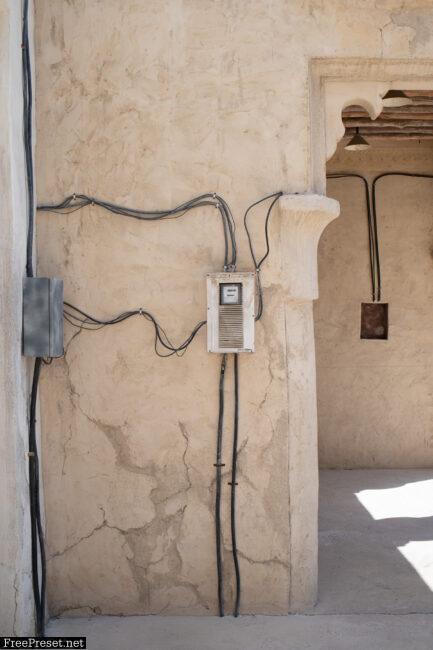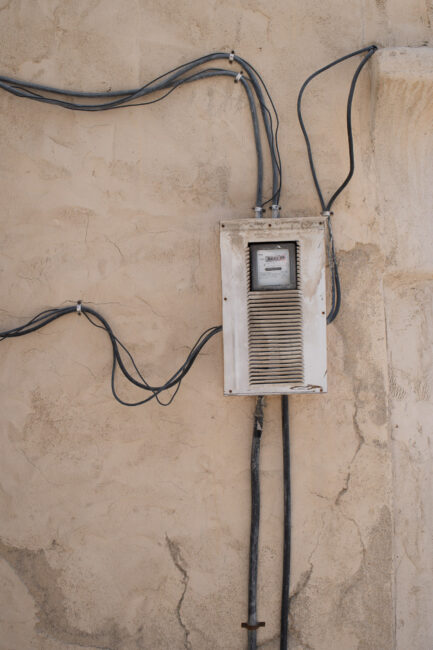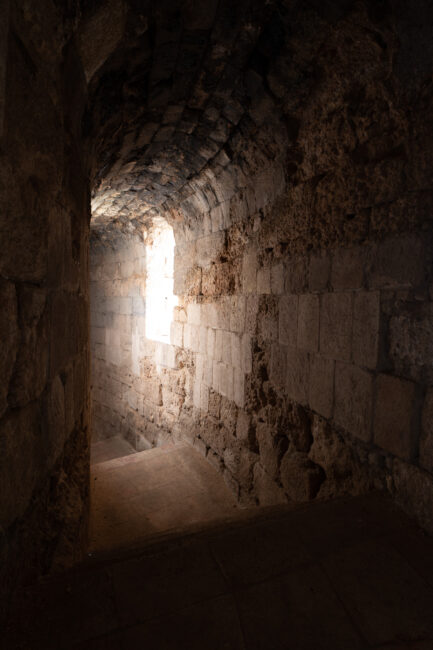In my opinion, a bridge exists between the heart and the head in photography, just as it does in many other areas of life. I use “bridge” rather than a word like “battle” because they aren’t really at odds with each other. They’re just two parts of the photographic process.
In other words, the decisions you make every time you take a picture range from spontaneous (the heart) to meticulously planned (the head). Both are important if you want to take powerful photos.
The Heart
As a photographer, some objects you see in the world will interest you more than others. Which ones? That depends on you. No two people will have the same answer.
Often, this is subconscious anyway – having something draw your attention. (I even considered calling this article “Photography from the Subconscious and Conscious,” but it didn’t have the same ring.) You’re walking along with a camera, and a subject catches your eye. You’ve taken a photo before you know it.
That’s all heart. Heart is the broad stroke of photography – the inspiration, whatever it was, that led you to take a picture in the first place.
The Head
The other side of photography involves conscious decision-making. The most obvious example is picking your camera settings, which requires at least some level of thought in order to do properly.
But there’s more to it than that. My mantra in photography is simple: ask questions. Look at the scene in front of you and make certain that you’re capturing it as well as possible. Are your camera settings optimal? Is your composition balanced? Do you even want a balanced composition in the first place? Why?
These decisions are part of the head. It’s the detail-oriented side of photography – turning your inspiration into a tangible, successful photo.
Which One Should You Work On?
As I said at the beginning of this article, heart and head in photography are not at odds with one another. The situation isn’t, “my heart wanted the photo to look one way, even though my head told me it was a bad idea.” It’s more, “my heart liked this subject, and my head figured out how to photograph it.”
In other words, you should try to improve both. Improvement in one does not come at the expense of the other.
Here are some signs that you should develop the heart/subconscious side of photography:
- You feel like you need to be in an amazing location to find good subjects
- You inadvertently skip over good subjects and only realize it later
And some signs that you should develop the head/conscious side of photography:
- You need to delete photos for image quality reasons
- You realize how you should have composed a photo only when you’re back at your computer
- You don’t have an end goal in post-processing and catch yourself just pushing sliders around
- The first photo you take of a subject is the best, rather than a steady improvement as you refine things in the field (aside from cases where conditions out of your control get obviously worse, like a rainbow fading)
If any of these sound like they describe your photography, don’t despair. To varying degrees, I think most of them apply to every photographer out there. And knowing what you need to fix is an important step in actually fixing it.
How to Improve Both Types of Decisions
Almost every tutorial you read or watch about photography will focus on the conscious side of things – the head. That’s because those are actually possible to teach. Whether it’s a post-processing walkthrough, camera setting recommendations, or composition tips, there’s usually a takeaway that you’re meant to remember in the future. And a takeaway is the sort of thing that appeals to the head.
Be aware that “the head” does not mean “emotionless.” Instead, “the head” is just about making conscious decisions – and would anyone argue that you can’t make conscious decisions about emotion? If you decide, for example, on a centralized composition because you like the power it gives your subject, that’s a decision of the head. I’d even argue, as I have in the past, that conscious decision-making is the key to creative photography – because it’s the sort of thing you can control, and it’s the easiest way to root out issues with your photo’s initial appearance.
If you need to work on decisions of the head, I recommend reading or watching tutorials about photography whenever possible. Try to figure out what skills you need to work on (hint: what are the 2-3 most common reasons you have to delete a photo?) and find a some good books or articles that cover those topics.
As for the “heart” side of things, that’s trickier. Do you want better subjects to catch your eye? Then, somehow, you need to improve the spontaneous, unconscious process of what draws your attention. It’s akin to improving what you like. No wonder there’s not much written about it.
But that doesn’t make it impossible. Personally, I think the best way to improve “the heart” is to consume a wide variety of art of all different media. Everything from music to books to sculpture, definitely not just photography. Some you’ll like, and some you won’t. You’ll develop subconscious preferences and tastes along the way, which I firmly believe carry over when you practice photography in the real world.
On top of that, take some time to really look at your best photos. Also, look at the photos you’ve taken that don’t work well, even (or especially) if you got all the technical things right but still don’t like them. There’s no deeper thing you should do here besides taking it all in. You’re just trying to internalize a sense of what works and what doesn’t, in hopes of improving the “caught your eye” mechanism that goes on behind the scenes.
Lastly, the one way I know to improve both the heart and the head simultaneously is practice. The more pictures you take, the better you’ll get at every type of decision-making in photography, whether conscious or spontaneous.
Examples
To make it clear what I mean by heart and head, and where each starts to apply, I want to show a few examples. This is a bit similar to what I covered in my article on the refining process, but in this case I want to pinpoint where heart and head come into play.
We’ll start with a basic example. I noticed some interesting wires on a building during our UAE/Jordan workshop and immediately took a picture. This is as close as you can get to my initial, subconscious impression – i.e., heart:

It didn’t take much prompting for me to envision this subject as a sci-fi alien stranded in the desert, and I wanted to capture that essence as best I could. Anything that took away from that message or gave a sense of normalcy had to go, especially the distractions on the left and right. So, I made some conscious decisions (head) in hopes of improving my composition, which led to this second version:

Finally, in post-processing, I wanted to make the photo look more lively – which, by extension, hopefully would make the wires look more alive. To me, the original colors are too muted, as is the case with most RAW photos. I decided (head) which sliders would give me the proper look, and I adjusted them accordingly. Post-processing is nearly always based on conscious decisions, and this was no exception:

The next example has a similar story. I was taking telephoto cityscape pictures and trying to settle on a good subject for long exposures. The following pattern of roads stood out to me, so I took an initial photo without too much thought about perfecting my composition. It’s more heart than head:

I realized (consciously) a few things that needed attention. First, the photo is imbalanced; too much attention is on the brighter left-hand side, which doesn’t work for my smooth and tranquil message. Second, the left-hand edge is distracting anyway, with a lot of circular shapes that can draw away the eye.
But most importantly, I realized that the dark bridge in the center of the photo was actually a set of metro tracks.

So, in addition to the smaller refinements of the composition itself, I felt a moment of excitement at the possibility of capturing trails of light from the train as it passed by.
A lot of times, the conscious side of photography is about making small refinements to your composition. But, sometimes, it plays a bigger role. Maybe you have a moment of inspiration (heart) to take a certain still-life photo in the studio; then, you spend hours on end meticulously constructing the entire photo from the ground up (head). My situation this time wasn’t that dramatic, but the additional lights on the bridge really do help bring the photo together:

And then, like before, I made conscious post-processing decisions (head) to improve this photo, mainly just brightening the picture quite a bit and correcting the green color cast:

Another example that fits well in this “head and heart” framework is my attempt to photograph a camel with a shallow depth of field. On this same workshop, our group passed some camels while driving through the Liwa Desert in Abu Dhabi. We stopped and rolled down the window, while one camel turned its head toward our car with an expression of curiosity. I didn’t have any time to think and just captured a quick shot (heart) that stood out to me as a fun image:

But because of how quickly it happened, I didn’t have any time to take more photos and refine things like my focus point or composition. Still, I kept this photo in the back of my mind, and later that day I got a chance to capture something similar. Because I had been thinking throughout the day (head) how to improve the picture, I was prepared:

The second time, I had a wider lens and stood closer to the camel to exaggerate its features. I focused on the camel’s mouth rather than the eyes in order to capture what seemed to be a smile. I still kept the shallow depth of field of the original, but I think the new version is better (in part because of the brighter and more cheerful background). With some deliberate post-processing to brighten the photo, crop it a bit, and add some vibrance, my final image looks like this:

The last example I’ll give is a bit different. I saw an awesome window and staircase in the ancient city of Jerash in Jordan, and I knew immediately that I wanted a vertical, black-and-white image of it. Here’s my first attempt, which was mostly a product of heart, but also involved some conscious refinements in order to straighten the composition properly:

I knew next that I needed to take an HDR in order to get detail in the bright region of the photo, so I kept that composition and took a series of additional photos. That was just a technical decision, entirely head rather than heart. The completed HDR looks like this:

I made some additional post-processing decisions to refine the photo, including more highlight recovery and a bit of dehaze boost to sharpen up the textures. Again, all those decisions were head rather than heart:

And then my final step was to convert the photo to black and white. You might think this was another head-based decision, but I’d argue it was more about heart. That’s because, as I mentioned a moment ago, I wanted from the start to take a black and white photo of this scene. Unlike some photos where I debate about converting to B&W or not (a head-based decision), this photo was never a color image to me. And so I finished by converting the photo to match my original, spontaneous impression:

Final Thoughts
Keep in mind that “heart and head” is a just a framework. It’s a simplified lens through which you can see the world of photography – a useful analogy, but not a perfect description. Sometimes other factors play a role in your photos, like luck or accidents, which don’t fall neatly into either box.
Nevertheless, I think it’s helpful to see decisions in photography through this framework. Successful photography involves making choices – many of which are with your head, except for that crucial moment when you notice something and are inspired to take a picture in the first place.
This conscious-vs-subconscious debate has lurked behind the scenes in many of our previous articles and discussions on composition, so I’m happy to finally put my thoughts down into words. Hopefully this article helped you figure out which side of photography you need to work on and how to go about doing that. If you have any questions or comments about the article, let me know below!